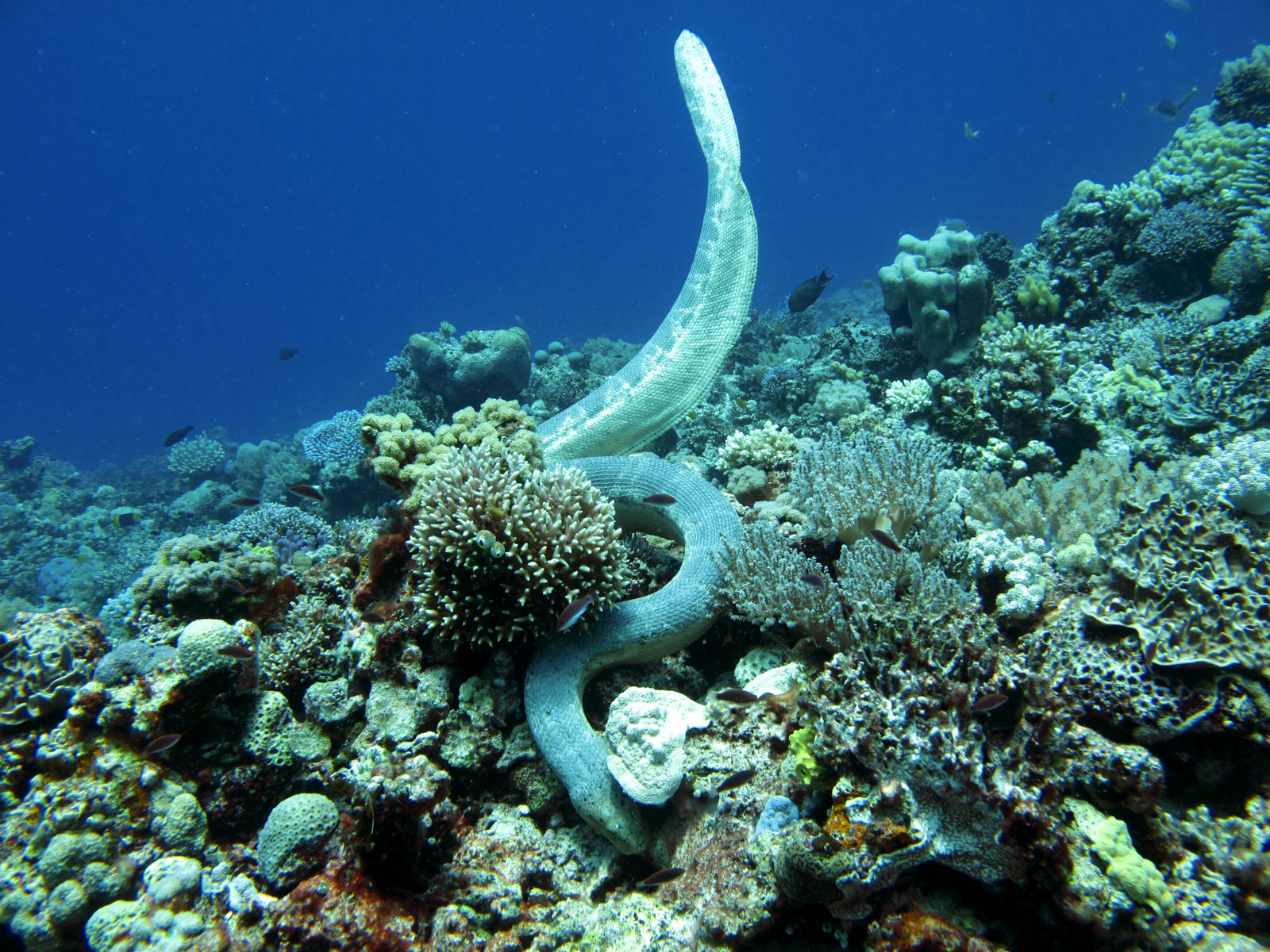Media release
From:
Researchers have for the first time closely tracked the fine-scale diving behaviour of two species of sea snakes that forage along the seafloor and discovered that one species performs a curious wiggle while travelling underwater.
“Most sea snakes live their entire lives in water, but, like seals and turtles, they cannot breathe underwater,” says University of Adelaide PhD candidate, Shannon Coppersmith, who led the study.
“For benthic foragers, which feed at the seafloor, the distance between where they source food and where they breathe poses a daily challenge.”
The study recorded sea snakes performing two distinct dive types: U-shaped dives, where snakes spent most of their time at the seafloor, and S-shaped dives, which involved a short time at the seafloor followed by a gradual, multi-stage ascent.
When visualised in time-depth plots, the ascent resembles a wave.
Previous research had only described S-shaped dives in the yellow-bellied sea snake (Hydrophis platurus), a species that is a rare exception among sea snakes because it lives in the open ocean and forages at the surface.
In contrast, all other species of Hydrophis – along with the closely related Aipysurus genus – are coastal benthic foragers that feed along the seafloor.
The new study, published in Movement Ecology, focused on two of these representative coastal species, Hydrophis stokesii and Hydrophis major, whose diving behaviour had not previously been documented.
“Unlike H. platurus, coastal species such as H. stokesii and H. major have the added challenge of foraging underwater, so we wanted to find out whether they performed similar dive shapes, and if so why,” Coppersmith says.
“When these species perform U-dives, which have not been seen in H. platurus, they appear to be spending most of the dive resting at the seafloor.
“The depth of the gradual ascent in their S-shaped dives could be a response to thermal gradients, favourable temperatures, or subsurface currents. Given the large horizontal distances the snakes cover in a single direction during this phase, we suggest it facilitates efficient transit between habitats, potentially through passive gliding at neutral buoyancy.
“Travelling around six metres above the seafloor may also allow sea snakes to move uninterrupted across patchy habitats and over reef structures that would otherwise obstruct their path if swimming closer to the seafloor.”
As for the wiggles, Coppersmith says this action may serve several functions.
“The wiggles observed in H. stokesii could have a functional role in buoyancy control, energy conservation, or even foraging,” says Coppersmith.
“It will be interesting to see if similar oscillations are observed in other species in future studies.”
The research team used acoustic telemetry to track the daily activities of five individuals in Exmouth Gulf, Western Australia, and Baie des Citrons, New Caledonia, creating three-dimensional dive paths for each snake.
Coppersmith says understanding sea snake behaviour is imperative to conservation efforts.
“Sea snakes are cryptic, unpredictable and venomous, so they’re difficult to study,” Coppersmith says.
“Our study contributes to a deeper understanding of sea snake diving strategies and will have implications for our understanding of their ecology, physiology, and conservation.”



 Australia; NSW; SA
Australia; NSW; SA


